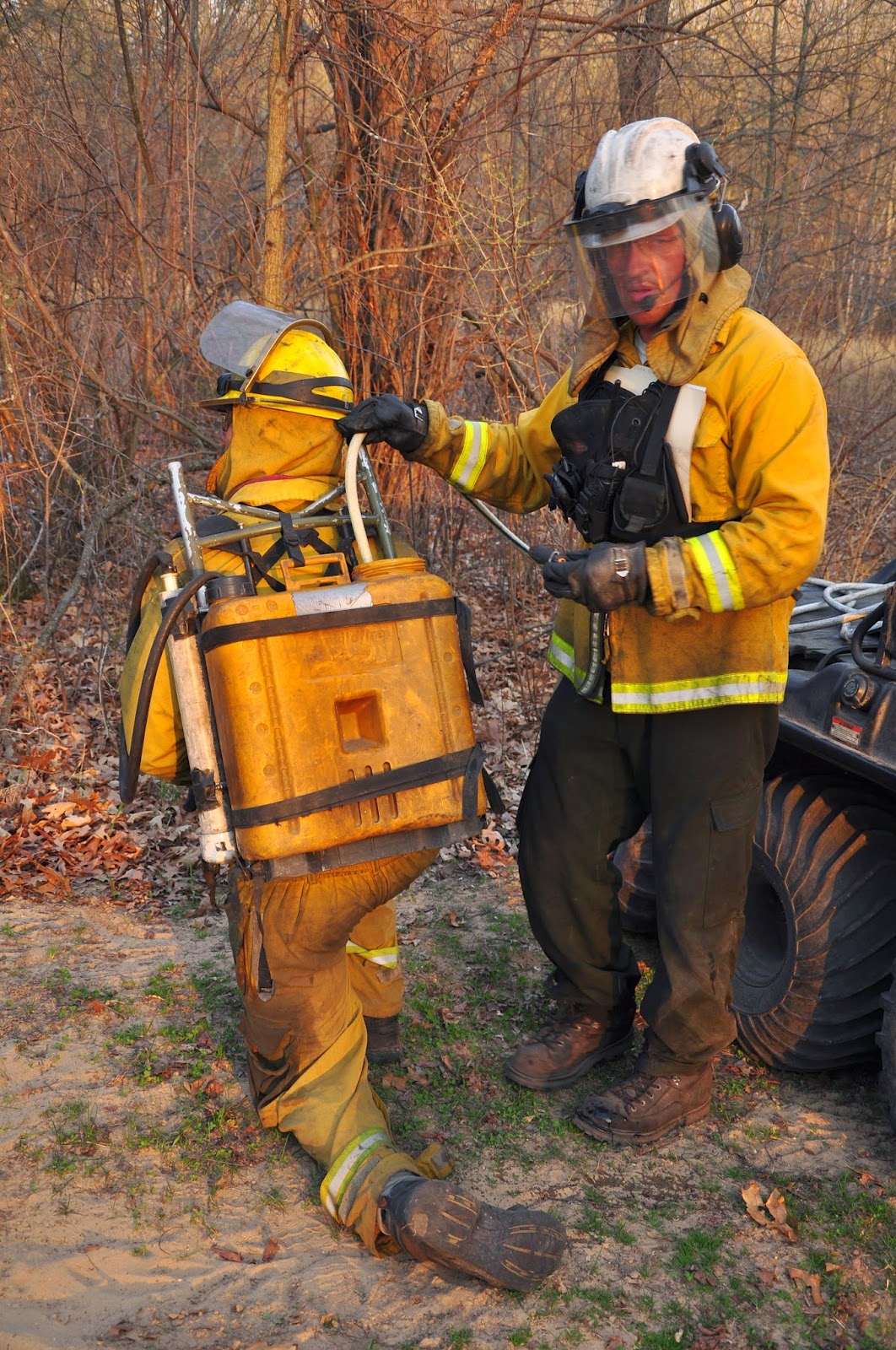It was close to 7:30 PM when they arrived at the Ecology Farm, fresh from another burn about an hour away. Because it was getting late, they got right down to business.
Gear was unloaded from the trailer and loaded onto vehicles.
The drip torches were filled with fuel,
and the Indian tanks were filled with water. These tanks, which each member of the crew carries on his or her back, weigh about 65 pounds when full.
A quick drive brought us to the grasslands. After setting a test patch alight to determine wind direction and speed of burn, the crew got right down to the work of getting the area lit and burning.
We made sure that visitors knew what trails were safe to walk and which ones were closed. We ended up having a few visitors join us for a bit as spectators. This was a great educational opportunity for them and as well as for us.
A small wooded area was part of the burn. The fire crew wanted to hit it first because a) it was downwind and b) it would be the most difficult part of the burn. Downed trees pose a potential problem - they might become flaming torches. Also, a clump of sassafras trees were also problematic - their resin is highly flammable and the way they were growing, in tight clusters, created potential "chimneys" that could be very hazardous.
The large amount of fuel in the wooded section meant that the crew was constantly dousing the flames with water to cool them down.
Refills were necessary.
Fires that are set downwind, that have to burn into the wind, are called backfires. These are slow-moving - like trying to swim against the current. This helps the fire crew manage the flames in tricky areas.
The area with the problematic sassafras was handled by boxing them out of the burn - if no flames reached them, then the hazard was avoided.
Here's what the wooded area looked like after the fire went through.
Then we were on to the grassland. Whoosh! The flames hit some good fuel and the crackling heat was impressive.
This area had been burned two years ago, with some mixed success. One of the reasons we wanted to burn it again so soon was because of the prevalence of spotted knapweed. This invasive plant has the ability to create monocultures by putting chemicals into the soil that prevent other plants from growing. It also does not burn well, as is noted by the spotty nature of these flames.
Several of the brush piles that our Cut-n-Dab Society (volunteers who work on invasive species removal for us) have made went up with impressively tall flames.
Soon the grassland was just patches of lingering flames.
Some areas took longer to burn than others. It was headed for 10:00 PM before the last flames were out.
As I was coming around the trail toward the end, I heard the peent of a woodcock calling to impress a mate. And there he was - right in the middle of the trail!
The next few nights should be good hunting for the local owls and other predators. Be sure to come out and watch as the grasslands and woods quickly re-green this spring, as the fire works its magic to regenerate the land.


















No comments:
Post a Comment